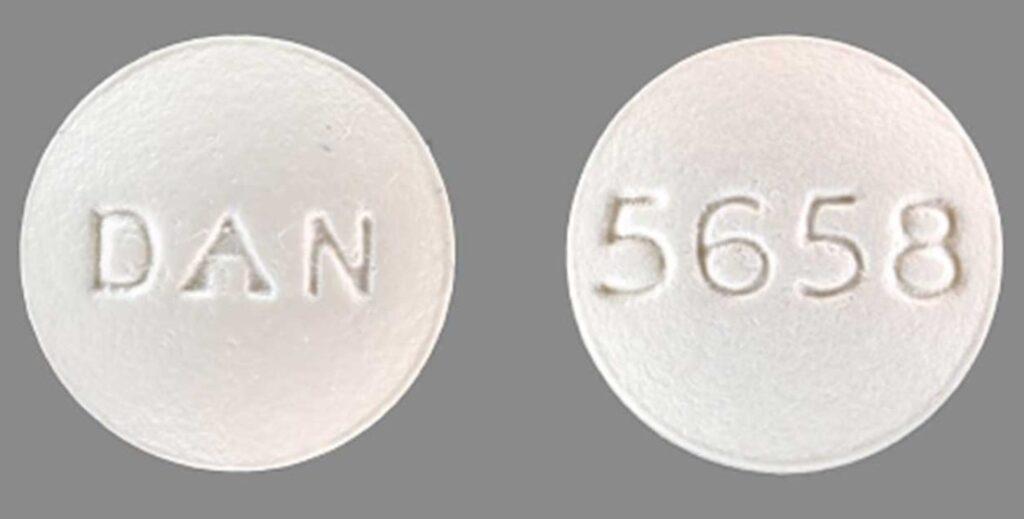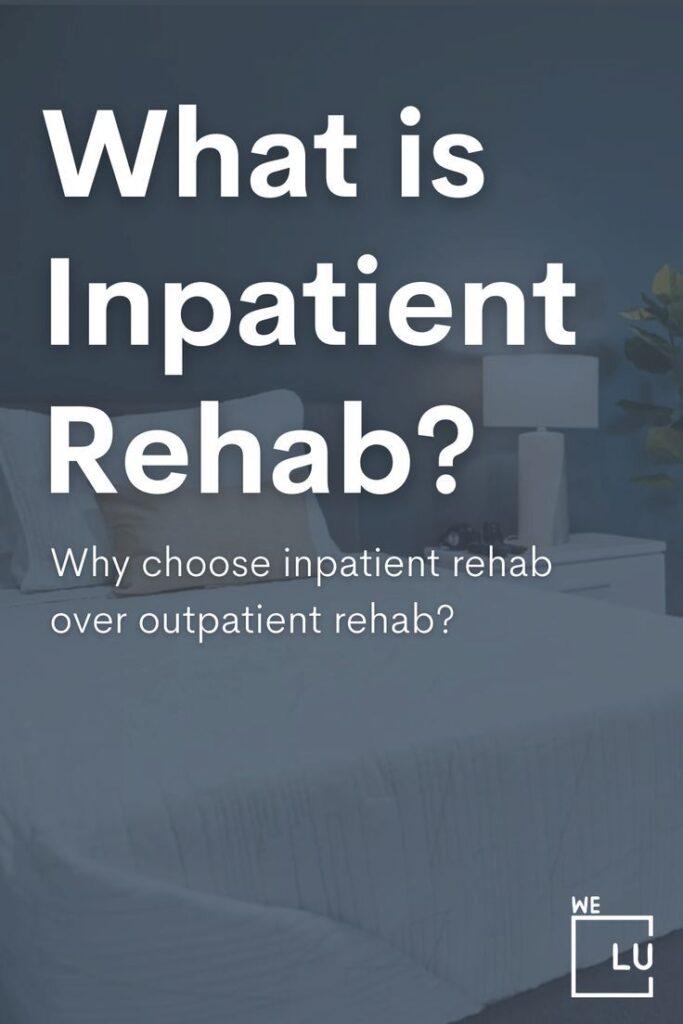How Long Does Flexeril Stay In Your System?
Flexeril (cyclobenzaprine) is a muscle relaxant commonly prescribed for treating muscle spasms and associated pain. The duration that Flexeril remains detectable in the body can vary based on several factors, including individual metabolism, dosage, frequency of use, and the type of drug test being conducted. However, I can provide general information regarding its elimination half-life and approximate detection times.
The elimination half-life of Flexeril is around 18 hours. It takes approximately 18 hours to eliminate half of the drug from your system. It usually takes about five half-lives for a drug to be cleared from the body, so in the case of Flexeril, it would take around 90 hours (or 3.75 days) for it to be eliminated.
Drug tests can detect the presence of Flexeril for a certain period after its use. Here are some estimated detection times for different types of drug tests:
- Urine test: Flexeril can be detected in urine for up to 4-6 days after the last use.
- Blood test: Flexeril can be detected in blood for up to 1-3 days after the last use.
- Saliva test: Flexeril can be detected in saliva for up to 1-4 days after the last use.
- Hair follicle test: Flexeril can be detected in hair follicles for up to 90 days (or 3 months) after the last use. However, it’s worth mentioning that hair tests are less commonly used for detecting Flexeril compared to other substances.
Please remember that these are approximate detection times and can vary depending on various factors. If you have concerns about Flexeril detection for a specific purpose, it’s best to consult with a healthcare professional or testing facility for more accurate information.
How Long Do The Side Effects Of Flexeril Last?
The duration of side effects from Flexeril (cyclobenzaprine) can vary depending on the individual and the specific side effect experienced. In general, most side effects of Flexeril are temporary and tend to resolve within a short period. However, the exact duration can differ from person to person. Here are some common side effects and their typical duration:
- Drowsiness or sedation: This side effect is usually experienced shortly after taking Flexeril and may last several hours. The sedative effect diminishes over time as your body adjusts to the medication.
- Dry mouth: Dry mouth is a common side effect of Flexeril, and it typically resolves within a few hours to a day after discontinuing the medication. Staying hydrated and chewing sugarless gum or sucking on ice chips can help alleviate this symptom.
- Dizziness or lightheadedness: Dizziness or lightheadedness may occur while taking Flexeril. This side effect is transient and may persist for a few hours after each dose. It is advisable to avoid activities that require alertness until the dizziness subsides.
- Fatigue or weakness: Flexeril can cause fatigue or weakness, making you feel less energetic or physically weaker. These side effects often diminish within a few hours after each dose. If they persist or become bothersome, consult your healthcare provider.
- Blurred vision: Blurred vision or changes in visual perception can occur with Flexeril use. This side effect is typically temporary and resolves within a few hours. If vision changes persist or worsen, seek medical attention.
It’s important to remember that individual responses to medication can vary, and some people may experience side effects for longer or shorter durations than average. If you are concerned about the duration or severity of side effects from Flexeril, or if they persist or worsen over time, it is recommended to consult your healthcare provider for further evaluation and guidance.

Skip To:
Learn More:
Get Help. Get Better. Get Your Life Back.
Searching for Accredited Drug and Alcohol Rehab Centers Near You?
Even if you have failed previously and relapsed, or are in the middle of a difficult crisis, we stand ready to support you. Our trusted behavioral health specialists will not give up on you. When you feel ready or just want someone to speak to about therapy alternatives to change your life call us. Even if we cannot assist you, we will lead you to wherever you can get support. There is no obligation. Call our hotline today.
(844) 597-1011How Long Does Flexeril Stay In Your System? Popular FAQs
-
Cyclobenzaprine 10 Mg Tablet How Long Does It Last?
Cyclobenzaprine 10 mg tablets’ effects typically last about 4 to 6 hours. However, individual responses may vary.
-
How Long Does Cyclobenzaprine Last In Your Blood?
Cyclobenzaprine can be detected in blood for 1-3 days after use. The exact duration can vary depending on factors such as metabolism and dosage.
-
How Long Does 5mg Of Cyclobenzaprine Stay In Your System?
The 5 mg of Cyclobenzaprine duration in your system can vary based on individual factors. However, as a general guideline, Cyclobenzaprine has an elimination half-life of around 18 hours, so it typically takes approximately 3.75 days to be cleared from your system.
-
How Long Does Flexeril 10 Mg Stay In Your System?
Flexeril (cyclobenzaprine) 10 mg generally takes about 3.75 days (90 hours) to be eliminated from your system. However, the duration can be influenced by factors such as metabolism, dosage, frequency of use, and the type of drug test being conducted. Specific drug tests may detect Flexeril for different periods, such as up to 4-6 days in urine, 1-3 days in blood, 1-4 days in saliva, or up to 90 days (3 months) in hair follicles.
Cyclobenzaprine Addiction Facts
Cyclobenzaprine Addiction Overview
Flexeril (cyclobenzaprine) is a muscle relaxant commonly prescribed to alleviate muscle spasms and discomfort associated with musculoskeletal conditions. While Flexeril is not considered highly addictive, it can still lead to dependence and abuse if not used as directed.
Prolonged or misused Flexeril can result in withdrawal symptoms and other adverse effects. Individuals need to follow their healthcare provider’s instructions, use the medication as prescribed, and communicate any concerns or changes in symptoms promptly. Consulting a healthcare professional is crucial for proper guidance and monitoring when using Flexeril to minimize the risk of addiction.
Cyclobenzaprine Addiction Signs
- Increasing Tolerance: Individuals may develop a tolerance to Flexeril over time, requiring higher doses to achieve the desired effects. This can be an indication of addiction.
- Continued Use Despite Negative Consequences: Despite experiencing adverse effects on physical health, relationships, work, or other areas of life, individuals may continue to use Flexeril compulsively.
- Preoccupation with Flexeril: An individual addicted to Flexeril may spend significant time obtaining the drug, using it, or thinking about it. This preoccupation can interfere with daily responsibilities and activities.
- Loss of Control: People with a Flexeril addiction often find controlling or limiting their drug use challenging. They may have unsuccessful attempts to cut down or quit using Flexeril.
- Withdrawal Symptoms: When attempting to stop or reduce the use of Flexeril, individuals may experience withdrawal symptoms such as muscle aches, restlessness, irritability, anxiety, insomnia, sweating, and nausea.
- Neglecting Other Activities: As Flexeril becomes the primary focus, individuals may neglect activities they previously enjoyed, or that were important to them, such as hobbies, socializing, or work commitments.
Cyclobenzaprine Addiction Treatment
Flexeril addiction treatment typically involves a comprehensive approach that addresses both addiction’s physical and psychological aspects. Here are some common treatment options:
- Medical Detoxification: If an individual has developed a dependence on Flexeril, a medically supervised detoxification process may be necessary to manage withdrawal symptoms safely. Medical professionals can gradually taper the dosage during this phase to minimize discomfort and ensure a safe transition.
- Behavioral Therapy: Various forms of therapy, such as cognitive-behavioral therapy (CBT), can be beneficial in treating Flexeril addiction. These therapies help individuals identify and modify unhealthy thoughts, behaviors, and triggers associated with drug use and develop effective coping strategies.
- Support Groups: Participating in support groups, such as Narcotics Anonymous (NA), can provide individuals with a sense of community, understanding, and encouragement. Sharing experiences and learning from others who have overcome addiction can be instrumental in the recovery process.
- Individual Counseling: Individual counseling sessions with a qualified therapist or counselor can provide a safe and confidential space to explore underlying issues that may have contributed to drug abuse. These sessions can help individuals develop healthier coping mechanisms and gain insights into their addiction.
- Dual Diagnosis Treatment: If a co-occurring mental health disorder is present alongside Flexeril addiction, integrated treatment that addresses both conditions simultaneously is crucial. This approach ensures that individuals receive comprehensive care for their physical and psychological well-being.
- Medication-Assisted Treatment (MAT): In some cases, medications may be used as part of a comprehensive treatment plan to help manage cravings and withdrawal symptoms. However, there are no specific medications approved for treating Flexeril addiction, so the use of medications would be based on individual circumstances and the presence of other substances.
Cyclobenzaprine Addiction Statistics
Understanding the scope and impact of Flexeril (cyclobenzaprine) addiction is essential for addressing this issue. By examining Flexeril addiction statistics, we can gain insights into the prevalence, trends, and consequences associated with the misuse and abuse of this medication. These statistics shed light on the challenges faced by individuals and communities affected by Flexeril addiction, highlighting the need for awareness, prevention, and effective treatment strategies.
0.2%
Approximately 0.2% of individuals aged 12 and older in the United States reported misusing cyclobenzaprine (the generic name for Flexeril) in 2018.
Source: SAMHSA
2003 to 2015
JAMA Network Open found that the misuse of muscle relaxants, including cyclobenzaprine, increased significantly during this period.
Source: JAMA Network Open
79.1%
From 2004 to 2015, cyclobenzaprine-related emergency department visits increased by 79.1%.
Source: Journal of Addiction Medicine

Get Your Life Back
Find Hope & Recovery. Get Safe Comfortable Detox, Addiction Rehab & Dual Diagnosis High-Quality Care.
Hotline(844) 597-1011
How Long Do The Effects Of Cyclobenzaprine Last?
The effects of Cyclobenzaprine can vary from person to person. Generally, the effects of Cyclobenzaprine last for about 4 to 6 hours after taking a dose. During this time, Cyclobenzaprine works on the central nervous system to relieve muscle spasms and associated pain. It helps to relax muscles and reduce muscle stiffness, allowing for improved mobility and relief from discomfort.
The duration of effects can depend on various factors, including individual metabolism, dosage, and the severity of muscle spasms. Some people may experience shorter or longer-lasting effects based on their unique physiological response to the medication.
Additionally, it’s worth mentioning that Cyclobenzaprine is typically prescribed as a short-term treatment for acute muscle spasms. It is not intended for long-term use due to the potential for tolerance, decreased effectiveness, and the risk of side effects. Your healthcare provider will determine the appropriate duration of treatment based on your specific condition and needs.
If you have concerns about the duration or effectiveness of Cyclobenzaprine or if your symptoms persist beyond the expected duration, it is essential to consult with your healthcare provider. They can evaluate your condition, adjust your treatment plan if necessary, or explore alternative options to ensure the most effective and appropriate management of your muscle spasms and associated pain.
First-class Facilities & Amenities
World-class High-Quality Addiction & Mental Health Rehabilitation Treatment
Rehab Centers TourRenowned Addiction Centers. Serene Private Facilities. Inpatient rehab programs vary.
Addiction Helpline(844) 597-1011Proven recovery success experience, backed by a Team w/ History of:
15+
Years of Unified Experience
100s
5-Star Reviews Across Our Centers
10K
Recovery Success Stories Across Our Network
- Low Patient to Therapist Ratio
- Onsite Medical Detox Center
- Comprehensive Dual-Diagnosis Treatment
- Complimentary Family & Alumni Programs
- Coaching, Recovery & Personal Development Events
How Long Does Cyclobenzaprine Last Before It Expires?
Like many medications, Cyclobenzaprine typically has an expiration date listed on the packaging. The expiration date indicates the date until the manufacturer guarantees the full potency and safety of the medication when stored properly. It’s essential to follow the expiration date guidelines to ensure the effectiveness and safety of the medication.
The expiration date of Cyclobenzaprine can vary depending on the manufacturer and the specific product. Generally, the expiration date is around 2 to 3 years from the date of manufacture. However, it’s crucial to check the packaging of your specific Cyclobenzaprine product for the exact expiration date.
Expired medication may not provide the desired therapeutic effects as the active ingredients can degrade over time. It’s recommended to dispose of expired medications properly and avoid using them, even if they appear unchanged in appearance or smell.
Suppose you have any specific questions or concerns about the expiration date or storage of Cyclobenzaprine. In that case, it’s best to consult your pharmacist or healthcare provider for accurate and up-to-date information. They can guide the safe and effective use of the medication.

World-class, Accredited, 5-Star Reviewed, Effective Addiction & Mental Health Programs. Complete Behavioral Health Inpatient Rehab, Detox plus Co-occuring Disorders Therapy.
CALL(844) 597-1011End the Addiction Pain. End the Emotional Rollercoaster. Get Your Life Back. Start Drug, Alcohol & Dual Diagnosis Mental Health Treatment Now. Get Free No-obligation Guidance by Substance Abuse Specialists Who Understand Addiction & Mental Health Recovery & Know How to Help.
How Long Does Flexeril Stay In Your System? We Level Up Dual Diagnosis Treatment
We Level Up is a highly respected rehabilitation center with a reputation for its comprehensive approach to helping individuals with addiction to Cyclobenzaprine and co-occurring mental health conditions. The center acknowledges the complex relationship between addiction and mental well-being, and its treatment program combines evidence-based therapies, expert medical care, and a holistic perspective to provide a comprehensive and effective path to recovery.
The treatment approach employs various therapeutic techniques at We Level Up. Individual counseling creates a supportive environment where individuals can explore the underlying causes of their addiction and address any emotional issues that contribute to their challenges. Group therapy promotes a sense of camaraderie as individuals connect with others who have undergone similar experiences, enabling them to share insights and learn from each other’s journeys.
Behavioral therapies equip individuals with healthy coping mechanisms and valuable skills to manage cravings and triggers. Also, medication management may be incorporated into a comprehensive treatment plan when appropriate.
Experience Transformative Recovery at We Level Up Treatment Centers.
See our authentic success stories. Get inspired. Get the help you deserve.
Start a New Life
Begin with a free call to an addiction & behavioral health treatment advisor. Learn more about our dual-diagnosis programs. The We Level Up Treatment Center Network delivers recovery programs that vary by each treatment facility. Call to learn more.
- Personalized Care
- Caring Accountable Staff
- World-class Amenities
- Licensed & Accredited
- Renowned w/ 100s 5-Star Reviews
We’ll Call You
Watch The Prescription Drug Abuse & Prescription Medication Addiction Recovery & Sobriety Story Informative Video
Video Script
“I wanted my life back. I was a shell of a person. I wanted to be trusted; I wanted relationships back that I lost, mainly my children and family. It started innocent enough, I got into a car accident, and then I got sucked into the whole, you know, medication issue with the pills. And before I knew it, I was in a cloud. I was sucked in by addiction, and with my mind, I kept thinking it was OK because a doctor was prescribing this for me, a doctor was giving me this, a doctor was giving me that.
So, I didn’t think I was doing anything wrong. Level Up supports my family and my relationships with my family, and they’ve helped me grow as a person. When I first started there, I was so intimidated and scared, you know? But, they’ve taught me, they’ve taught me how to come into my own. And then, you know, when I get the call from my twenty-one-year-old daughter in the middle of the day, to say ‘I love you, Mom.’ that’s amazing.”
Jen’s Addiction Recovery Testimonial.
Search We Level Up How Long Does Flexeril Stay In Your System? Resources
Sources
- National Institute on Drug Abuse (NIDA) – Prescription Drug Misuse and Abuse: https://www.drugabuse.gov/publications/research-reports/misuse-prescription-drugs/overview
- Substance Abuse and Mental Health Services Administration (SAMHSA) – Prescription Drug Misuse and Abuse: https://www.samhsa.gov/
- U.S. Food and Drug Administration (FDA) – Drug Safety and Availability: Cyclobenzaprine Information: https://www.fda.gov/
- Centers for Disease Control and Prevention (CDC) – Prescription Opioid Overdose Data: https://www.cdc.gov/
- National Library of Medicine (NLM) – MedlinePlus: Cyclobenzaprine: https://medlineplus.gov/druginfo/meds/a682514.html
- National Institute on Drug Abuse (NIDA) – Principles of Drug Addiction Treatment: A Research-Based Guide: https://www.drugabuse.gov/publications/principles-drug-addiction-treatment-research-based-guide-third-edition
- National Institutes of Health (NIH) – National Institute on Drug Abuse (NIDA) – Treatment Approaches for Drug Addiction: https://www.drugabuse.gov/publications/drugfacts/treatment-approaches-drug-addiction
- SAMHSA – Find Treatment: https://www.samhsa.gov/find-treatment
- National Alliance on Mental Illness (NAMI) – Substance Use Disorders: https://www.nami.org/About-Mental-Illness/Common-with-Mental-Illness/Substance-Use-Disorders
- Office of National Drug Control Policy (ONDCP) – Prescription Drugs: https://www.whitehouse.gov/


